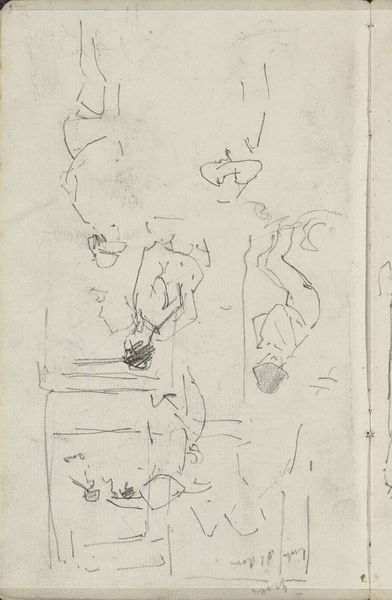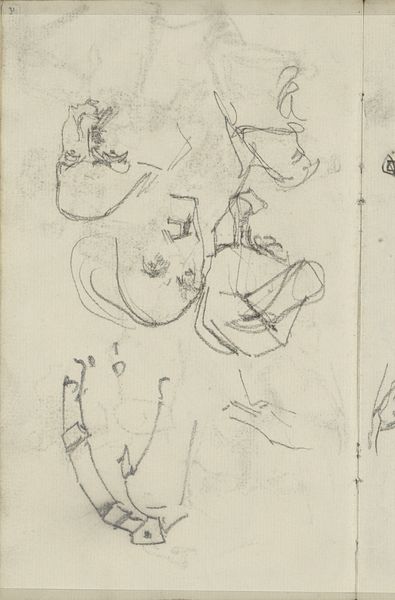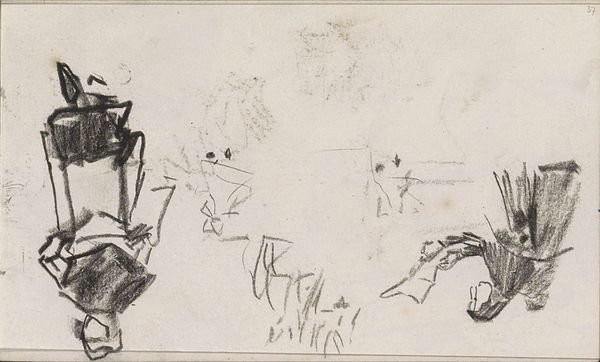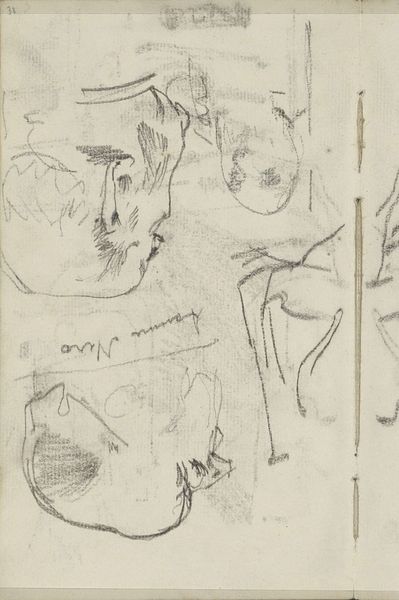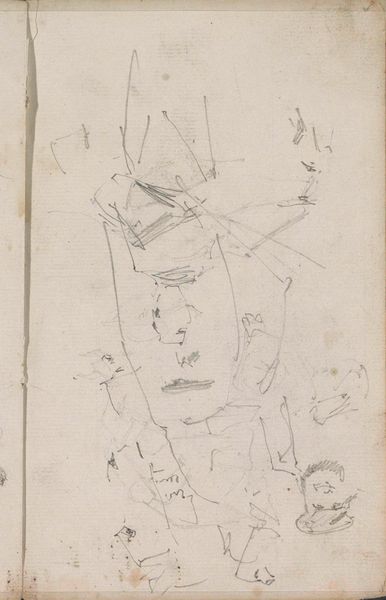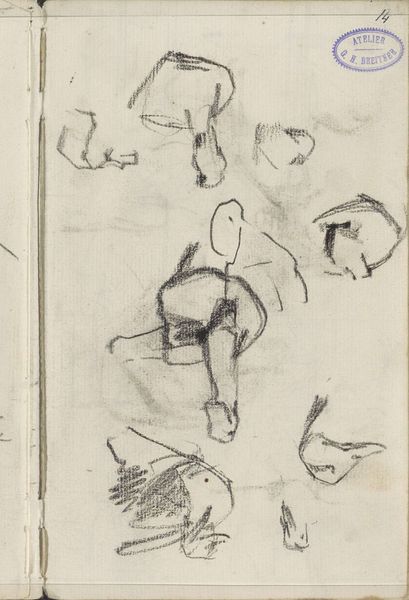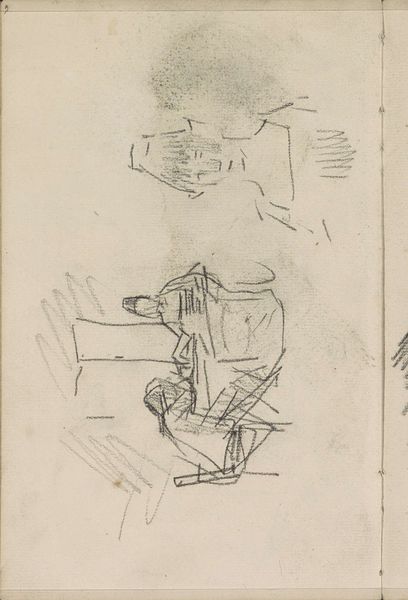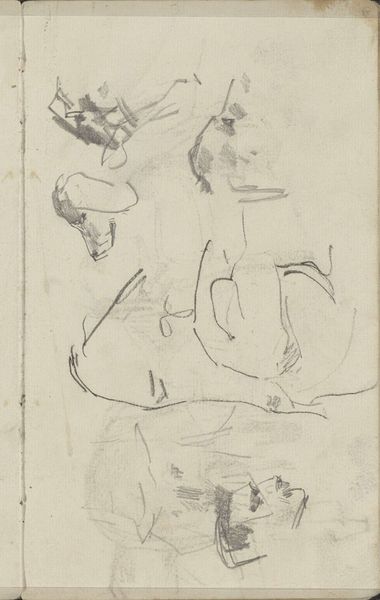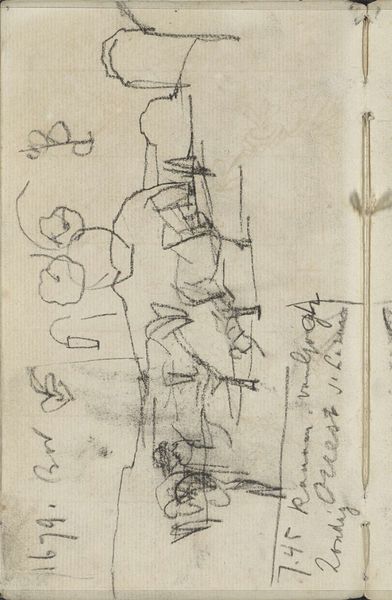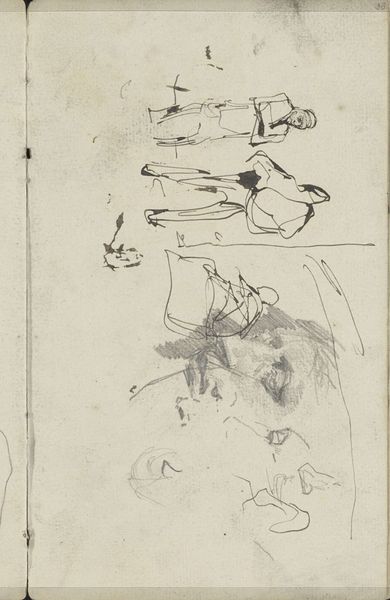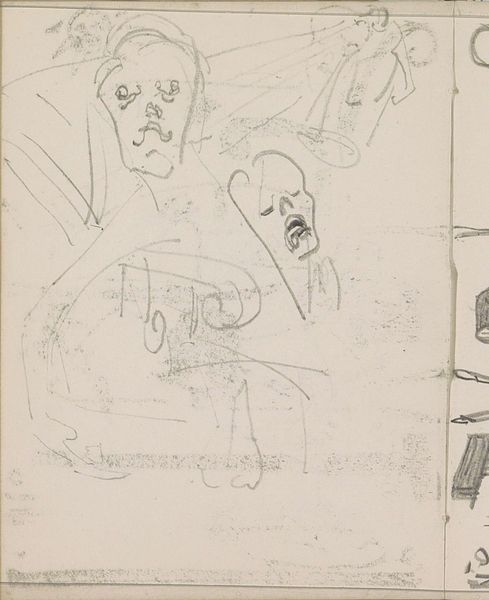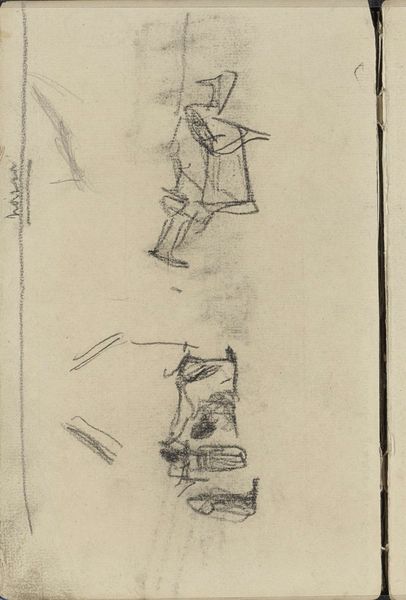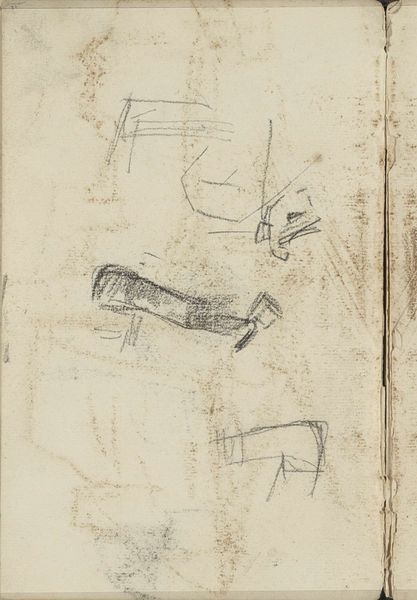
drawing, paper, ink
#
drawing
#
landscape
#
figuration
#
paper
#
ink
#
genre-painting
#
post-impressionism
Copyright: Public domain
Curator: Looking at this page by Van Gogh from 1890, titled "Sheet with Figures at a Table, a Sower, Clogs, etc.," one is immediately struck by the seemingly random scattering of images. Drawn with ink on paper, it resides at the Van Gogh Museum in Amsterdam. Editor: Yes, it has a kind of dreamlike quality, disjointed, almost unsettling. There’s a lack of clear focal point, which contributes to this fragmented sensation. The contrast of stark ink lines on the off-white paper definitely highlights a mood of restless experimentation. Curator: The rapid, almost frenetic strokes definitely imply an exploratory working method. We see depictions of working class figures: one assumes peasant farmers, perhaps sketched quickly from life. The repetition of the clogs especially speaks to me. I think he was interested in them as both objects and symbols of labor. They seem so large, even monumental in places, hinting at their utilitarian value. Editor: I agree about the shoes. We know Van Gogh often turned to scenes of rural working life, his focus being on laborers within a harsh socio-economic reality. Consider how this drawing functions within the institutional space of the museum. Is it presented as a glimpse into his artistic process or something meant for public consumption? And how does that change how it's understood? Curator: I would argue that this page demonstrates an interest in materials connected to the common worker—their clothing, their tools. It suggests an intimate relationship with his subjects, rather than an aloof study. This piece feels intensely personal, a private visual record, and how that contributes to its modern appreciation within a museum setting, should be recognized. Editor: Absolutely. The sketches here point towards a social context—the tough life of the peasant class—but also to the institutional context through which we understand Van Gogh himself: as both the empathetic documentarian and troubled genius. This interplay becomes the ultimate tension, perhaps its real commodity for viewing today. Curator: I think that this viewing makes it obvious how we shape our relationship with artifacts; Van Gogh and his process being no exception to the ways the market sees his material. Editor: Indeed, understanding the dialogue between material culture, the act of creating, and social visibility adds crucial layers of complexity.
Comments
No comments
Be the first to comment and join the conversation on the ultimate creative platform.
